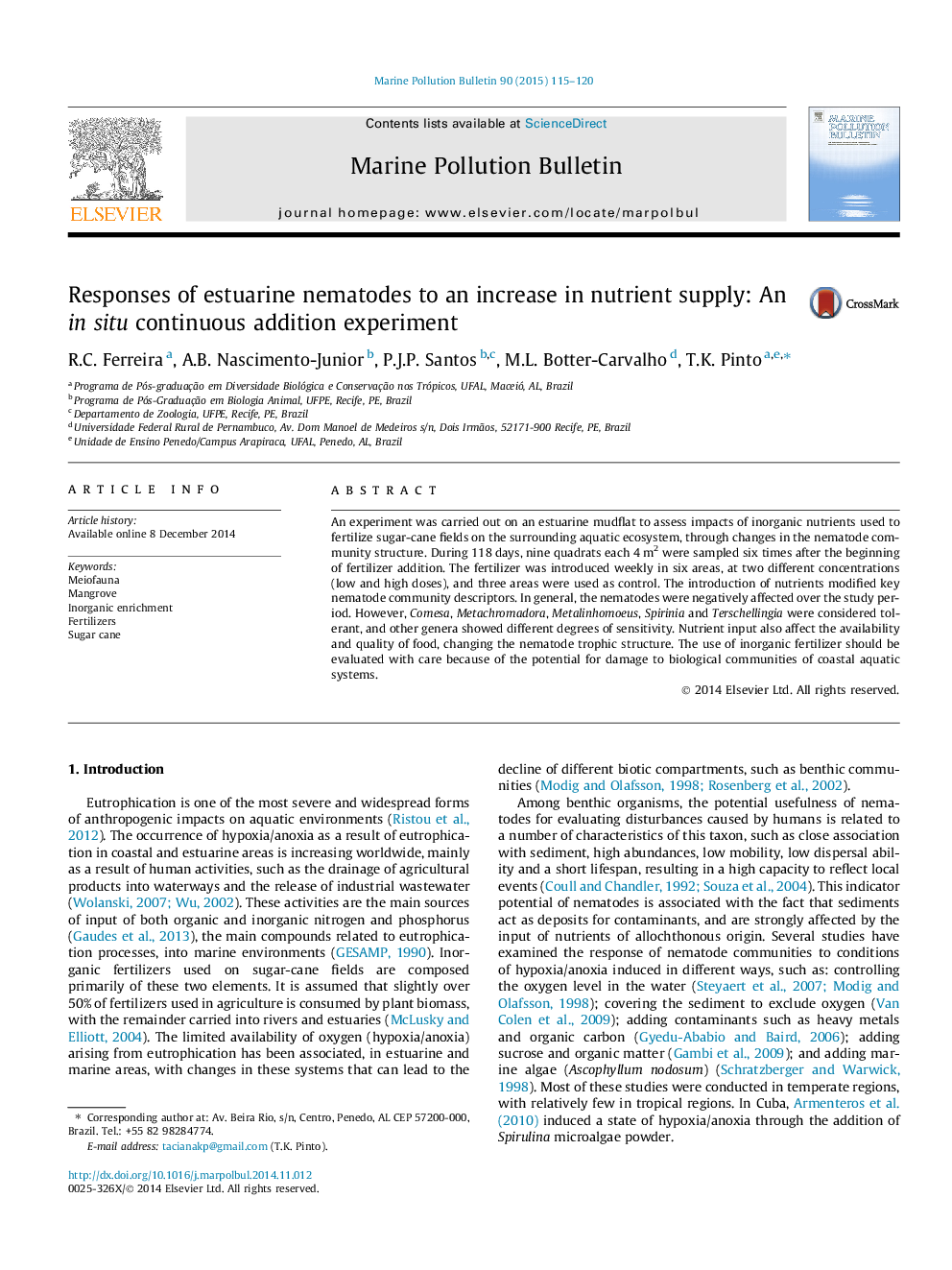| Article ID | Journal | Published Year | Pages | File Type |
|---|---|---|---|---|
| 6357187 | Marine Pollution Bulletin | 2015 | 6 Pages |
â¢Different concentrations of the fertilizer lead to different response of the fauna.â¢High dose drastically reduced Nematoda densities from day 71.â¢Nematode responses are related to physiological questions and feed requirements.â¢Nematode community was effective in detect impacts of the inorganic enrichment.
An experiment was carried out on an estuarine mudflat to assess impacts of inorganic nutrients used to fertilize sugar-cane fields on the surrounding aquatic ecosystem, through changes in the nematode community structure. During 118Â days, nine quadrats each 4Â m2 were sampled six times after the beginning of fertilizer addition. The fertilizer was introduced weekly in six areas, at two different concentrations (low and high doses), and three areas were used as control. The introduction of nutrients modified key nematode community descriptors. In general, the nematodes were negatively affected over the study period. However, Comesa, Metachromadora, Metalinhomoeus, Spirinia and Terschellingia were considered tolerant, and other genera showed different degrees of sensitivity. Nutrient input also affect the availability and quality of food, changing the nematode trophic structure. The use of inorganic fertilizer should be evaluated with care because of the potential for damage to biological communities of coastal aquatic systems.
